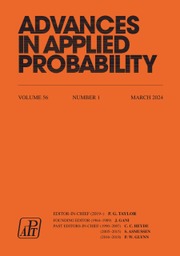Crossref Citations
This article has been cited by the following publications. This list is generated based on data provided by Crossref.
Acuña-Ureta, David E.
Orchard, Marcos E.
and
Wheeler, Patrick
2021.
Computation of time probability distributions for the occurrence of uncertain future events.
Mechanical Systems and Signal Processing,
Vol. 150,
Issue. ,
p.
107332.
Högnäs, Göran
and
Jung, Brita
2025.
Exit times for some nonlinear autoregressive processes.
Modern Stochastics: Theory and Applications,
p.
375.

